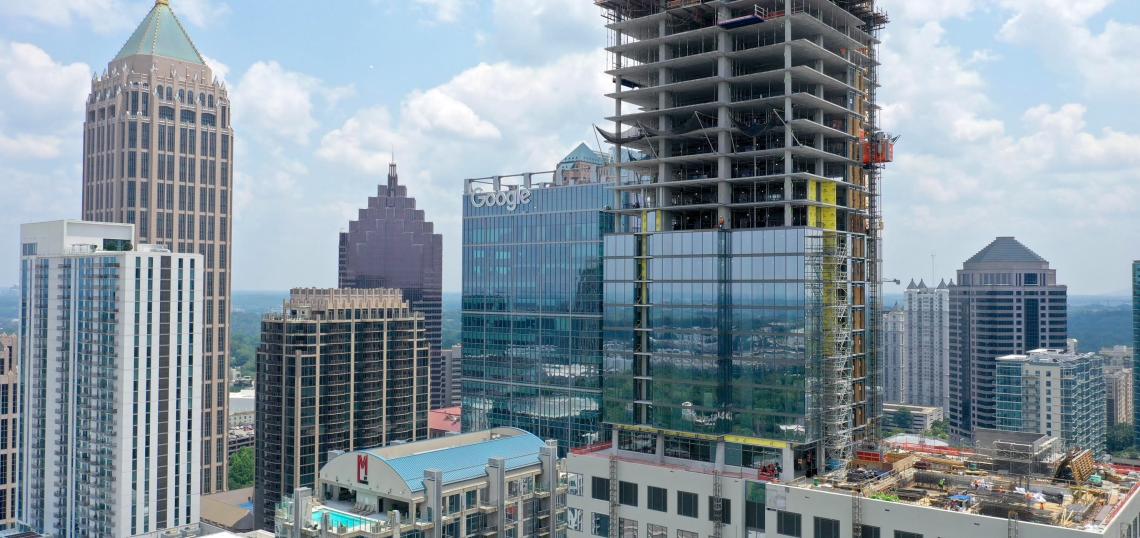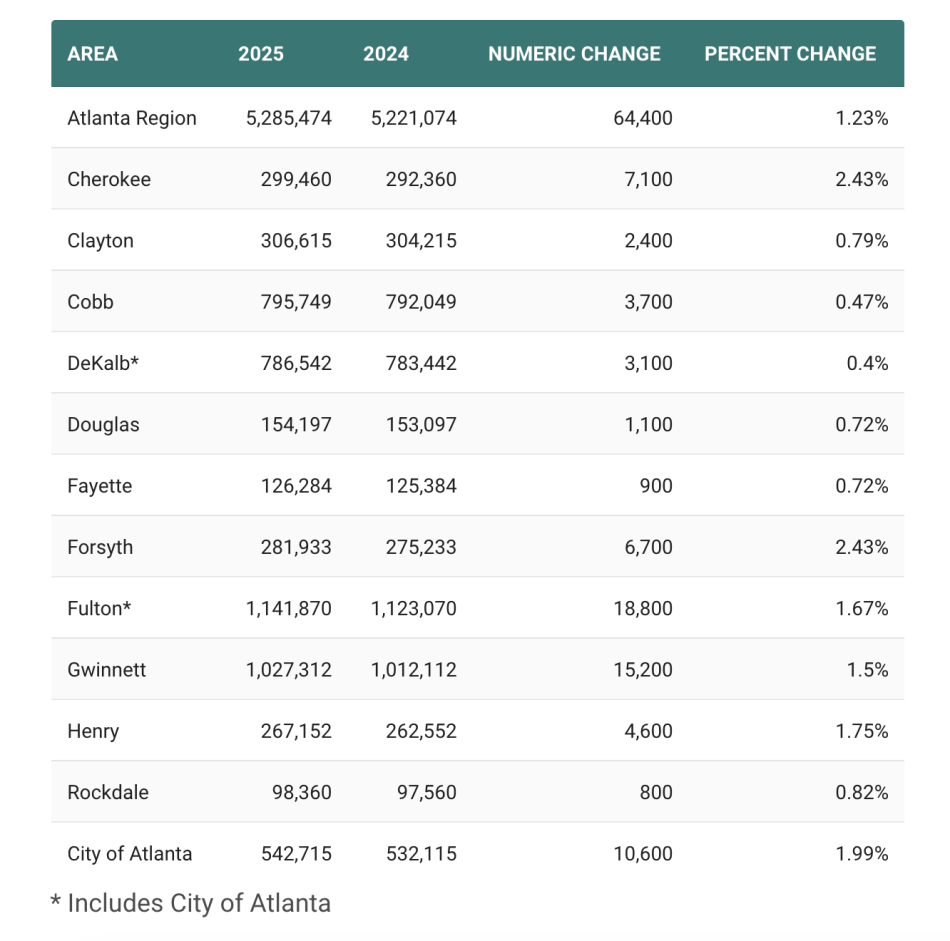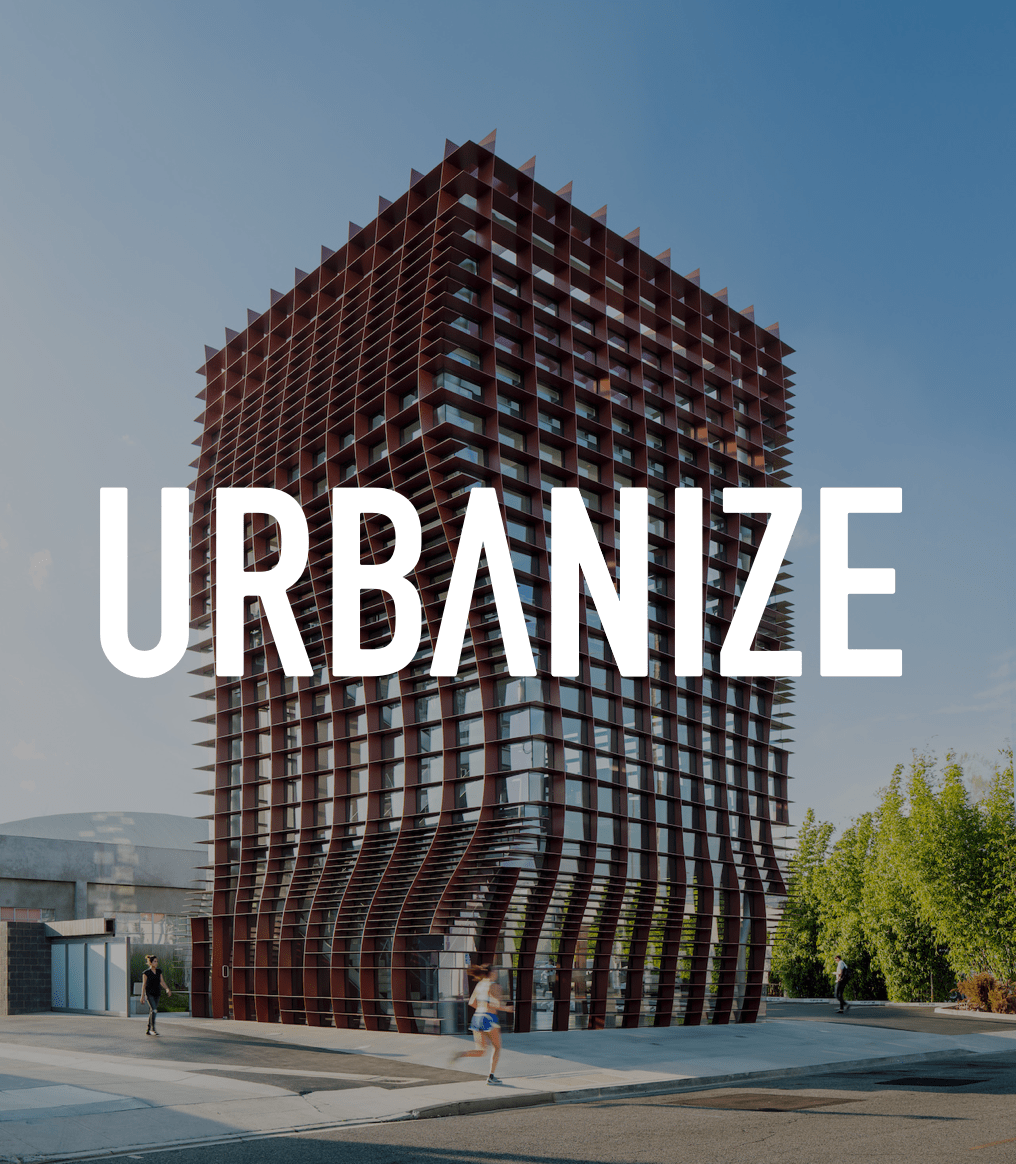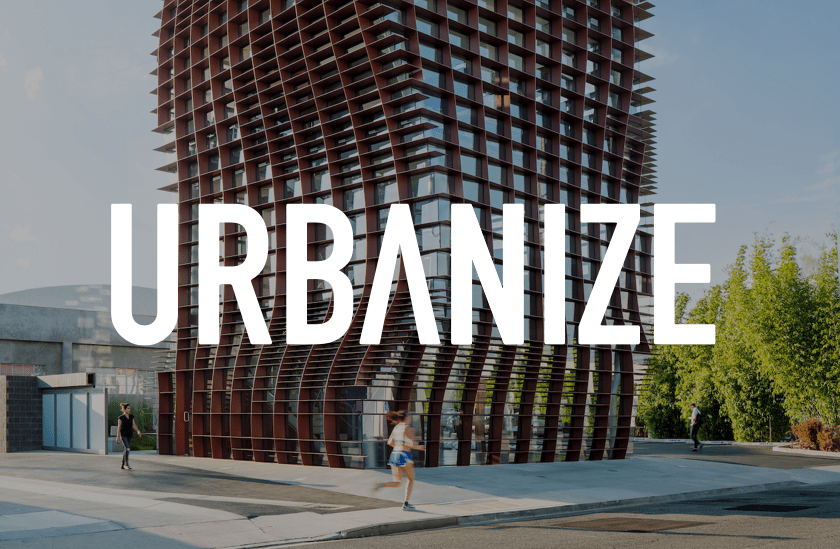Metro Atlanta’s decades-long growth spurt is hardly petering out, and the strongest growth patterns are now concentrated in the City of Atlanta itself and outer suburbs, according to new Atlanta Regional Commission data compiled in a closely watched annual report.
According to ARC estimates, Atlanta’s 11-county metropolitan area added 64,400 residents over the year prior to April, for a total population of 5.28 million. All 11 counties studied experienced population gains in that time period, per ARC officials. (Note: The U.S. Census Bureau defines metro Atlanta as 29 counties with a population of roughly a million more people.)
The ARC’s findings come after a Wall Street Journal report titled “Atlanta’s Growth Streak Has Come to an End” caused a national stir last month, pointing to a dip in domestic migration over the 12 months ending in mid-2024. Atlanta boosters and economists argued that take didn’t paint the full picture of metro population trends.
The metro’s growth is actually gaining momentum, if slightly. The nearly 65,000 people added metro-wide last year was about 1,700 more than the year prior, per the ARC’s analysis, though growth rates remain significantly lower than boomtimes in the 1980s and 1990s.
As with previous years, the City of Atlanta led the region in number of building permits issued (8,109) by far; second-place Gwinnett County notched 5,607 permits in the same period.
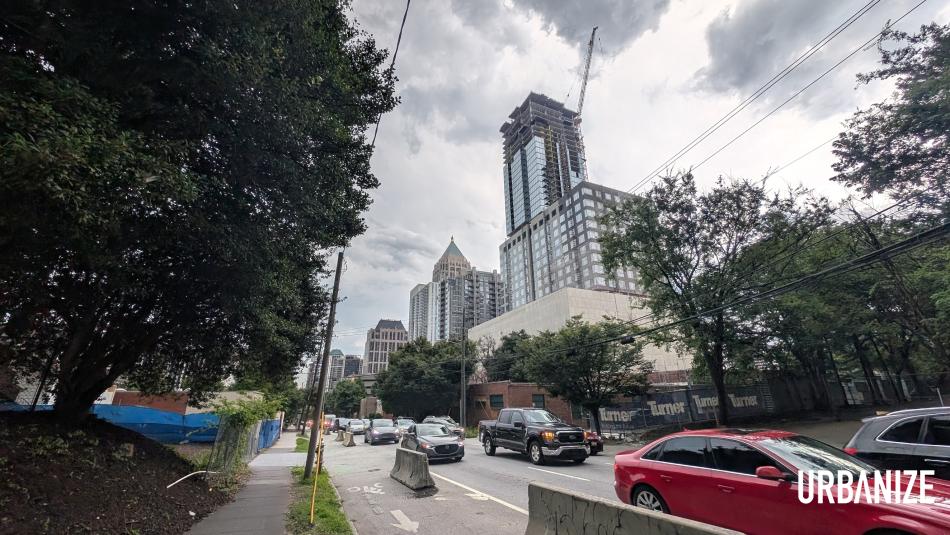 Looking northeast, the 1072 West Peachtree skyrise's stance over Spring Street, with other landmark Midtown buildings in the background. Josh Green/Urbanize Atlanta
Looking northeast, the 1072 West Peachtree skyrise's stance over Spring Street, with other landmark Midtown buildings in the background. Josh Green/Urbanize Atlanta
According to ARC estimates, the city added another 10,600 people for nearly 2 percent growth. That pushed the city’s total population to almost 543,000 residents—good for the most in history, following a previous peak of 497,000 residents in the 1970s.
Multifamily housing developments in hot zones such as Midtown and along the Beltline corridor have fueled the city’s population surge, which has averaged 1.7 percent since 2010, following three decades of stagnation, per the ARC.
The only higher metro growth rates across the year ending in April were logged in Forsyth and Cherokee counties, which each swelled at a 2.4-percent clip, per the ARC.
Fulton County—including the City of Atlanta—tallied the highest numeric boost in residents in the region (18,800), followed by Gwinnett (15,200), Cherokee (7,100), Forsyth (6,700), and Henry (4,600) counties. (Strangely absent: Cobb and DeKalb, eh?)
Driving the metro’s growth is an employment base that’s swelled by 8 percent since pandemic-addled early 2020, good for the seventh-highest rate in the nation among metro areas, per ARC’s tally. But the outlook isn’t entirely rosy. Spiking housing costs, driven by still-low supply, have “acted as a brake on the region’s population growth,” per the report.
Throughout 2024, just shy of 29,500 building permits were issue across the 11-county region. That’s a 3-percent increase from a year earlier, but it’s still lower than permit levels prior to the Great Recession, when the metro’s population was smaller, per the ARC.
Anna Roach, ARC executive director and CEO, said the new data show metro Atlanta continues to be among the country’s most dynamic and vibrant regions. “Businesses continue to choose metro Atlanta as a place to grow and thrive, from global corporations to nimble start-ups,” said Roach in a statement. “This keeps our economy moving and our population growing.”
...
Follow us on social media:
Twitter / Facebook/and now: Instagram
• Is Atlanta’s hot streak ending—or are red flags overblown? (Urbanize Atlanta)




